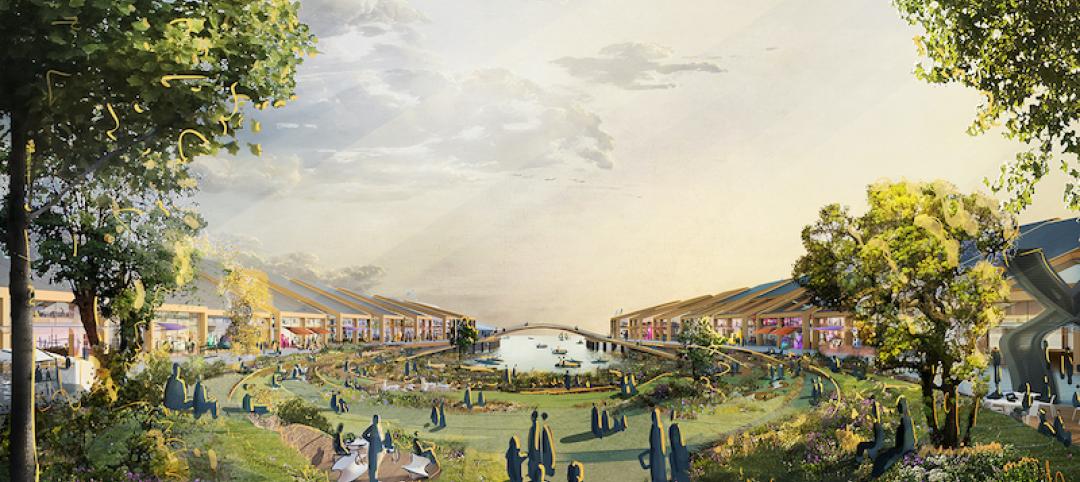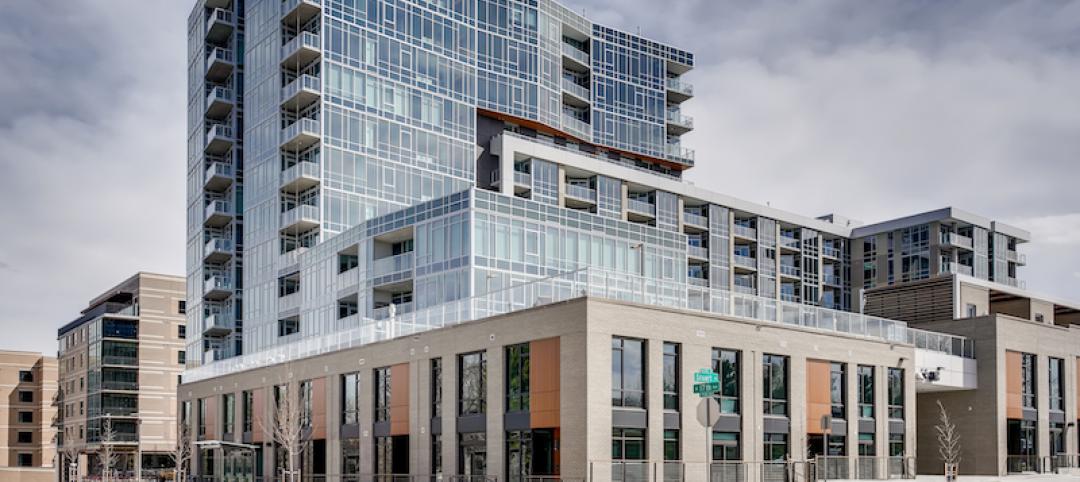AEC firms that have been pushing wellness for years say they finally have a receptive ear with developers and owners. “Developers sell this; they see it as an exciting new trend,” says Colin Rohlfing, AIA, LEED AP, Vice President and Director of Sustainability with HDR.
The advice about wellness these firms dispense to clients in many cases has already been road tested to make their own workplaces healthier.
New Orleans-based Eskew+Dumez+Ripple positions wellness to clients as “asset opportunities,” such as yoga rooms and classes, with the goal of keeping employees active, says Ian O’Cain, AIA, Associate and Project Architect. One of his firm’s recent projects is a new 30,200-sf, two-story office building in New Orleans that serves as the corporate headquarters for general contractor Palmisano Group. The $9 million building includes an in-house gym and yoga studio, green space, an active stairwell, and a racetrack layout that creates a circulation path for employees. The narrow floorplate (55 feet wide) lets in lots of light.
One of DPR Construction’s recent projects is a new office space in Charlotte, N.C., for Little Diversified Architectural Consultants. Chris Gorthy, a Project Executive with DPR, says that before embarking on this project, Little’s management toured several WELL-certified buildings, including DPR’s office in Reston, Va.
Little’s Charlotte office takes up 60,000 sf over 2½ floors of an existing building. Wellness certification accounted for about $8 per sf of its $150 per sf cost (including furniture), according to Little CEO Phil Kuttner, AIA, LEED AP, WELL AP. Its wellness features include a monumental staircase, access to drinkable water throughout, and ample natural lighting. Gorthy says the biggest challenge was upgrading the building’s air quality, which required educating the project’s subcontractors, setting up a temporary containment system, and figuring out how the air system could be cleaned.
Kuttner says the company assigned a team within its company to monitor the office’s air and water quality, conduct employee satisfaction and productivity surveys, and issue reports.
Last November, Clark Construction became the first GC in the U.S. to be a Fitwel Champion. As part of that agreement, Clark has identified seven of its offices—in Baltimore and Bethesda, Md.; Chicago; Irvine, San Diego, and San Francisco, Calif.; and Seattle—to achieve Fitwel certification.
“This is a way for our company to break through to our employees about its concern for their healthier living,” says Fernando Arias, Clark’s Director of Sustainability. He observes, too, that many of his firm’s clients “are in the same boat” and are looking for ways to provide healthier work environments to their employees.
Take, for example, a mixed-used project in Maryland that Carr Properties is developing known as The Wilson & The Elm, a 930,000-sf building with 360,000 sf of office space and 460 for-rent apartments. (The demolished building this replaces had been known as The Apex.) Arias says the genesis of this project was a meeting he had in early 2018 with the developer’s CEO Oliver Carr, which led to a presentation about wellness that Arias’ team made to Carr executives last April.
Carr Properties now has four projects registered with Fitwel, and The Wilson & The Elm is likely to be the second certified, following another Clark-built project: Midtown Center in Washington, D.C.
What prompted Carr Properties to move toward wellness, says its Senior Director of Development Jason Bockenek, was “a combination of our outlook as long-term owners of real estate, and increased demand driven by sophisticated tenants, catering to a younger workforce.”
Related Stories
Sustainability | Sep 30, 2020
U.S. Green Building Council, Green Business Certification Inc. expand resilience resources to support the green building industry
LEED and GBCI rating systems drive resilience-enhancing strategies to help businesses and governments mitigate climate risks.
Sustainability | Sep 29, 2020
Heatherwick Studio creates a new concept for San Francisco’s Piers 30-32
The new vision is dubbed The Cove.
Sustainability | Aug 13, 2020
The largest single sloped solar array in the country completes
The installation sits atop Pittsburgh’s Mill 19.
Sustainability | Aug 11, 2020
Sustainability is key for Denver Water’s modernized campus and distribution system
The utility is showcasing a new admin building and a water reuse plan that’s a first for the state.
Sponsored | Voice of the Brand | Jul 2, 2020
Solving the Building Envelope Challenge
Today, solutions for the building envelope need to meet exacting standards on two equally important fronts – long-term performance and enduring aesthetic appeal. In this article, CENTRIA demonstrates how its products meet the standard in two different scenarios – construction of a new hospital in Asheville, North Carolina, and the addition to a popular museum in Pittsburgh.
Sustainability | May 11, 2020
Watch Bjarke Ingels discuss Mars Science City, BIG's prototype Martian city in Dubai
Ingels believes designing for Mars will help us reach sustainability goals on Earth.
Multifamily Housing | May 8, 2020
'Lakehouse' is the first multifamily project in Colorado to receive WELL Precertification
Stantec and Muñoz + Albin are the project's architects.
Sustainability | Apr 28, 2020
Could a virtual 'city-forest' help solve population density challenges?
The project will house 200,000 people.
Sustainability | Apr 16, 2020
This will be the largest Living Building in the world
ZGF Architects is designing the building.
Sustainability | Mar 31, 2020
Passive house standard becoming increasingly popular for multifamily housing development
Residents reap healthier indoor environment, lower utility bills.

















